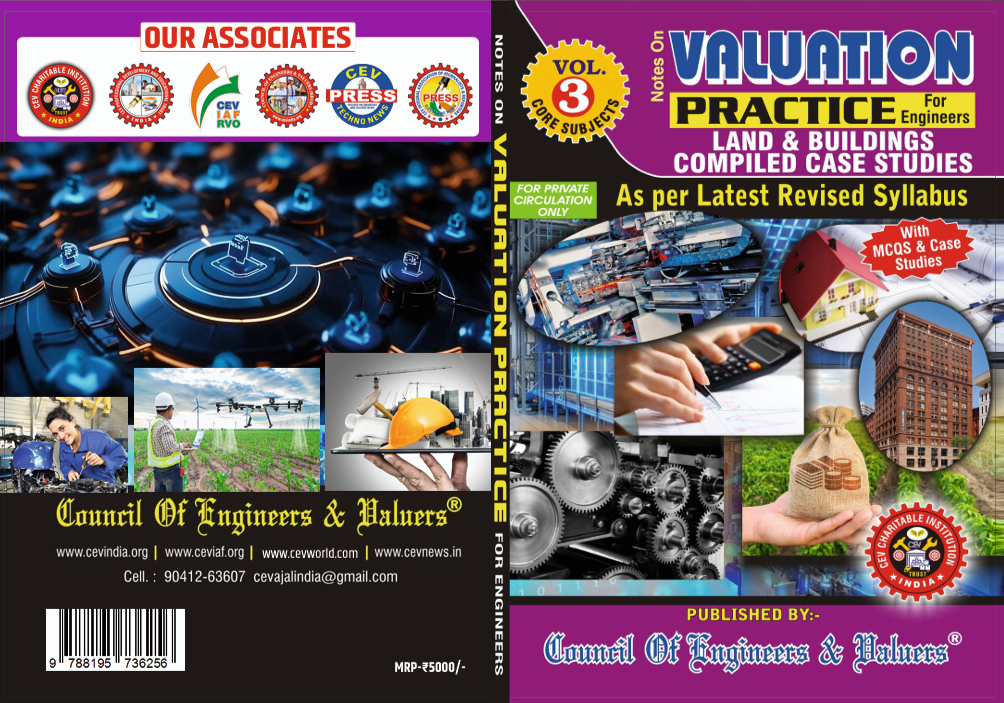LEGAL REMEDIES AGAINST FALSE CASES IN INDIA
A GUIDE FOR PROFESSIONALS IN ENGINEERING AND VALUATION
By Er. Sundeep Bansal
Published in: CEV Techno News, Renowned Newspaper for Engineering & Valuation Practice
For Professionals in Engineering, Valuation, and Land Administration
False accusations or fabricated legal cases can be deeply damaging—not just personally, but also professionally. For engineers, valuers, and technical consultants who often hold fiduciary responsibilities and deal with high-value projects, a single false allegation can undermine years of professional credibility and trust. Whether these arise out of contractual disputes, rivalries, or malicious intent, Indian law provides clear remedies and protective mechanisms for those falsely implicated.
This article provides a comprehensive overview of legal recourse, important statutory provisions, and practical steps professionals can take if faced with such a situation.
Understanding False Cases in the Professional Context
In sectors like engineering, real estate valuation, and infrastructure consultancy, disputes are common—be it over project execution, valuation differences, or tender allocations. Sometimes, these disputes escalate into legal complaints. While the legal system encourages grievance redressal, misuse of the process through false complaints is a rising concern.
Legal Recourse Available Under Indian Law
1. Anticipatory Bail – Section 438, CrPC
If a professional fears arrest due to a false case, anticipatory bail is a vital safeguard. Under Section 438 of the Code of Criminal Procedure (CrPC), a person can apply for anticipatory bail before the Sessions Court or High Court, ensuring protection from arrest during the investigation stage.
Why it matters: It prevents undue harassment and allows professionals to continue their work while cooperating with the legal process.
2. FIR Quashing – Section 528, BNSS
With the introduction of the Bharatiya Nagarik Suraksha Sanhita (BNSS), Section 528 empowers the High Court to quash an FIR if it finds the allegations are prima facie baseless or fabricated. This is a crucial remedy for professionals wrongfully dragged into criminal proceedings.
Key Note: This remedy is particularly useful when the FIR is filed out of malice or to pressurize professionals during contractual disputes.
3. Defamation Suit – Section 356, BNS
False allegations can irreparably harm a professional’s reputation. Under Section 356 of the Bharatiya Nyaya Sanhita (BNS), a defamation suit can be filed—either civil or criminal—seeking compensation and penal action against the complainant for malicious intent.
Practical Use: This tool helps reclaim professional dignity and deter others from adopting similar tactics.
Important Legal Provisions for Protection
Section 175(3), BNSS
This section empowers courts to direct police to investigate the veracity of a complaint, thereby deterring baseless accusations.
Section 176, BNS
This provision penalizes individuals who knowingly provide false information to the police, especially when it leads to wrongful legal proceedings.
Section 217 and 248, BNS
These sections prescribe punishment for filing false complaints, including imprisonment or fines. Professionals can invoke these sections when there is evidence that the complaint was filed with malicious intent.
Steps to Protect Yourself: Practical Guidance
1. Gathering Evidence
Professionals must act swiftly and diligently to gather evidence supporting their innocence:
-
Documentary Evidence: Project files, signed reports, emails, contractual correspondence, and audit trails.
-
Digital Evidence: CCTV footage, WhatsApp messages, location data, system logs, and voice recordings.
-
Expert Opinions: Third-party audits or expert technical reviews that validate the professional’s actions.
-
Witness Testimony: Colleagues, clients, or stakeholders who can vouch for the integrity and correctness of actions taken.
2. Legal Representation
Engage a competent lawyer experienced in criminal law and professional misconduct cases. Early legal intervention can help:
-
Draft appropriate responses to notices or complaints.
-
File anticipatory bail or petitions to quash FIRs.
-
Initiate defamation or counter-litigation proceedings.
3. Avail Legal Aid
For those unable to afford private counsel, free legal aid services are available under the Legal Services Authorities Act, 1987. NGOs and government panels often provide assistance to professionals facing harassment.
Professional Conduct & Documentation: Your First Line of Defense
Maintaining meticulous documentation, adherence to ethical codes of conduct, and transparent communication with clients and authorities can serve as the strongest defense against false allegations.
Organizations like the Council of Engineers & Valuers, and Registered Valuers Organizations (RVOs) also have internal grievance redressal and disciplinary mechanisms that may assist in parallel to legal action.
For engineers and valuation professionals, reputation is currency. While the law provides robust remedies against false cases, the real strength lies in proactive compliance, documentation, and legal awareness.
False cases are not just legal threats—they’re professional hazards. However, with the right legal strategy and a firm grasp of one’s rights, it’s possible to navigate such situations with confidence and dignity.
Disclaimer: This article is intended for informational purposes only and does not constitute legal advice. For case-specific guidance, always consult a qualified lawyer.
About the Author:
Er. Sundeep Bansal is a Chartered Engineer and an IBBI-registered valuer under the Companies Act, with a specialization in Real Estate. He regularly advises on complex valuation disputes, tax planning, and regulatory compliance, and is a contributor to leading industry journals.



